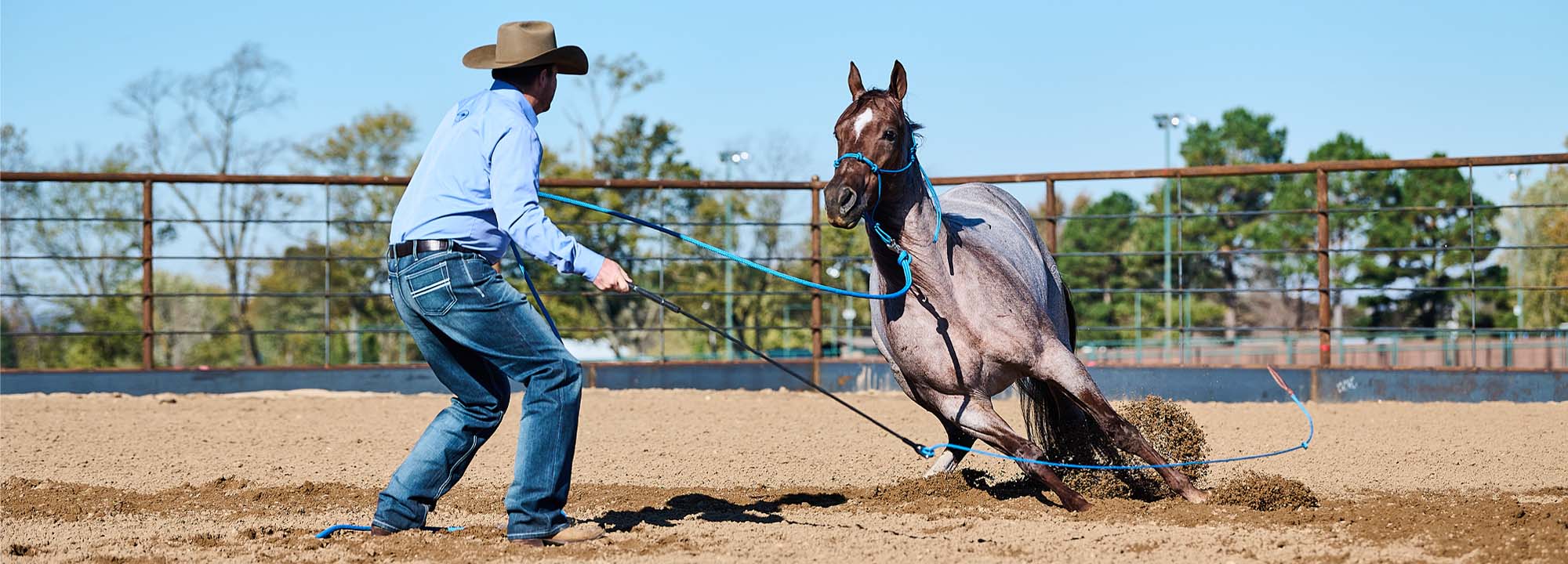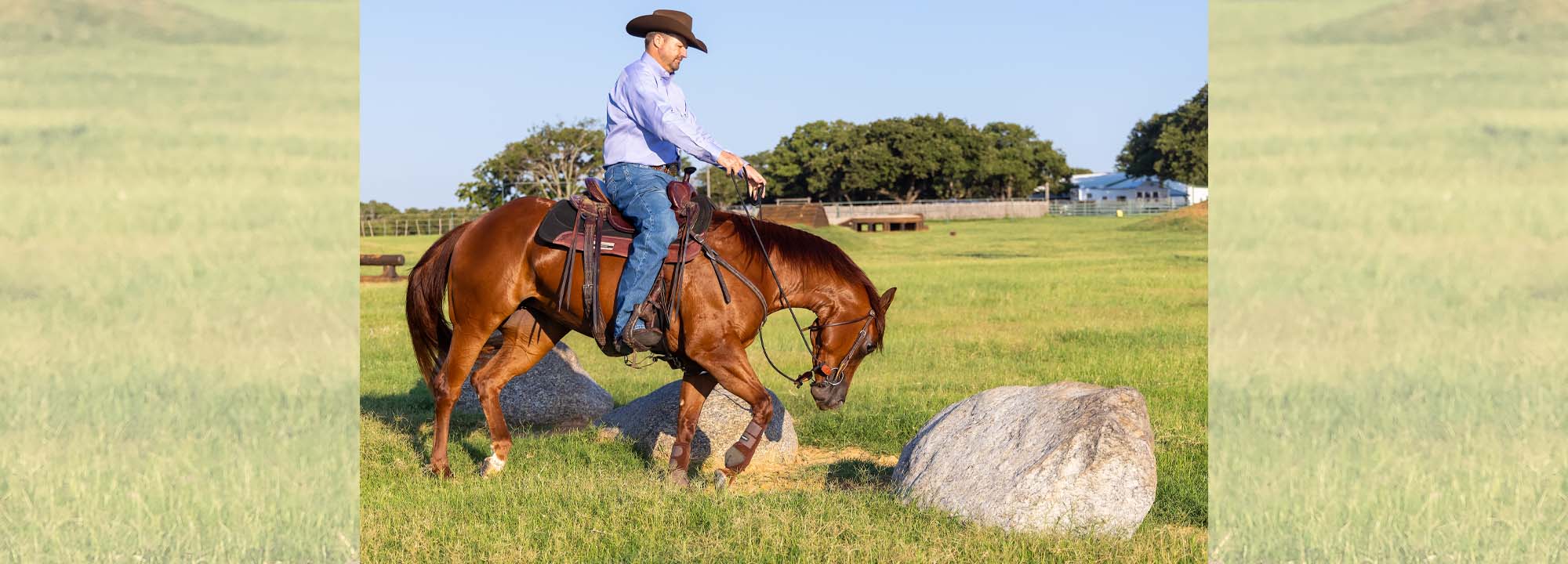Question: My mare kicks out at other horses when I walk her in hand around the stables. Do you have any advice on how to train away this unwanted behavior? – Maiken Nielsen
Clinton’s Answer: I’d start by teaching her all of the Fundamentals groundwork exercises. Chances are if you teach her the groundwork exercises, which will teach you how to be a leader and earn her respect, this behavior will go away. A horse that is tuned in to her handler and respects them doesn’t kick out at other horses as she’s being led.
Let’s say you’ve done the Fundamentals with your mare and she just has a horrible attitude and she still tries to kick out at other horses. The best way to get a horse over kicking other horses is to expose her to other horses, let her commit to the mistake, and then correct her.
Work with a friend to set the situation up safely at your barn. Have your friend bring her horse out in a big, open area where the two of you have plenty of room to work. Then, carrying your Handy Stick, lead your mare at a safe distance past the other horse, so that if she kicked out, she couldn’t harm the other horse or your friend. Bait your mare to misbehave.
As soon as your horse pins her ears back or gets cranky toward the other horse, immediately hustle her feet. Make her yield her hindquarters quickly, practice Lunging for Respect Stage Two—what you ask her to do isn’t important, just that you make her move with a lot of energy. You want it to be clear to her: If you get snarly, you’re going to feel uncomfortable. After a few minutes of hustling her feet, go back to leading her as if nothing happened. Practice walking by your friend and her horse until your mare ignores them.
Notice that I’m having you correct the horse as soon as she pins her ears back or acts cranky. You’re not waiting to make a correction until she kicks out. A horse being grumpy and pinning her ears is just as bad as her kicking another horse. What does a horse do after pinning her ears? She backs the threat up with her hind feet. Horses always warn that they’re unhappy by pinning back their ears. If they’re ignored, then they back up and act like they’re going to kick. If they’re still ignored, then they kick. There’s not much difference between a thought and an action. A horse will always give you a warning that she’s about to be disrespectful. It’s your responsibility to read her body language and act accordingly.
Have a horsemanship question or looking for more training tips? Check out the No Worries Club.





